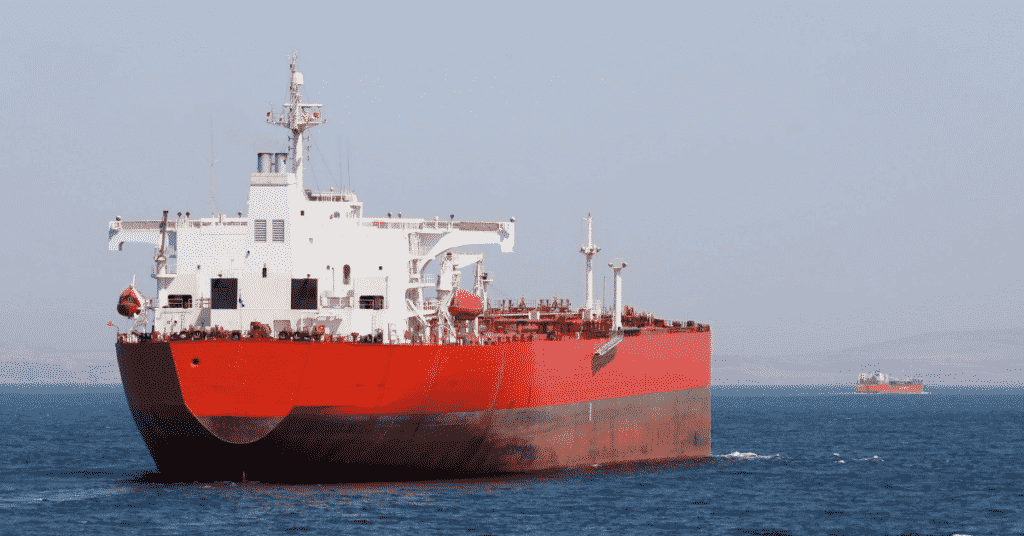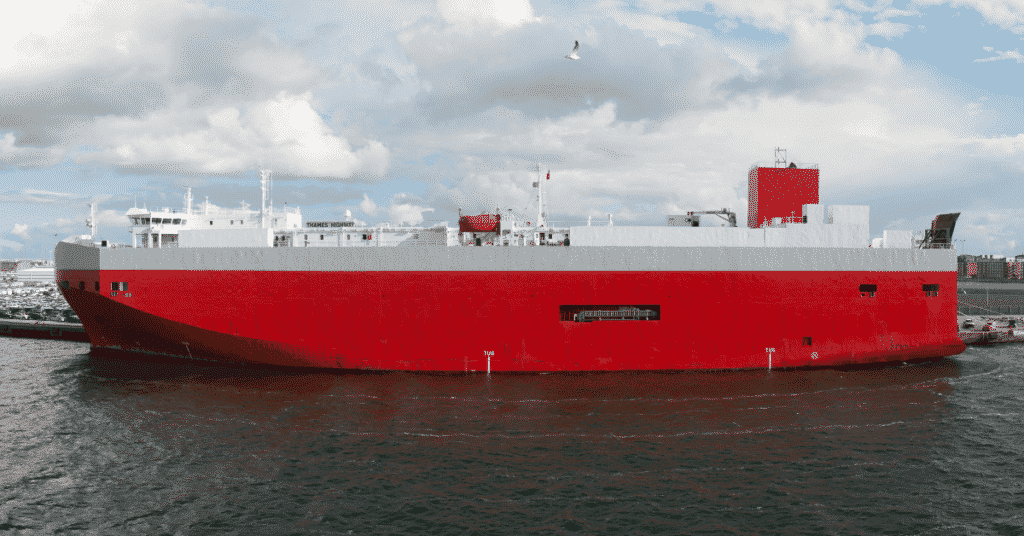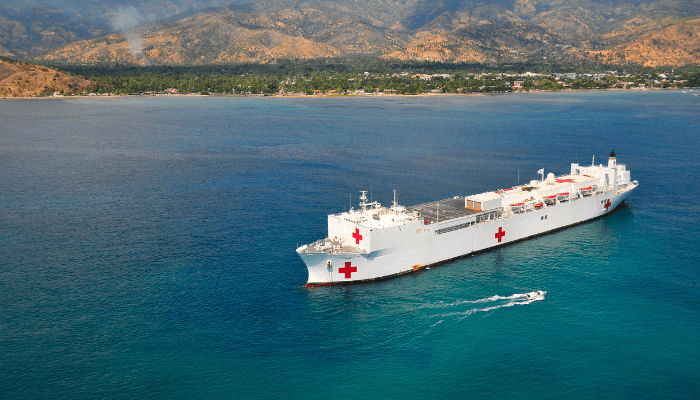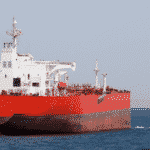Different Types of Barges – Uses And Differences
A type of vessel which is primarily used for transporting cargo is termed as a ‘Barge’. Barges are not something like independent vessels or boats but are floating vessels generally towed or tugged along with other vessels.
A barge is flat-shaped on its bottom, just like a raft. The main reason for this particular shape is to ensure that the cargo-carrying capacity is enhanced and more bulk can be hauled and transferred.
Understanding Barges
As mentioned earlier, a barge is a type of vessel which is mainly used for the purpose of carrying cargo. However, the most important part about barges is the fact that they are not independent boats or vessels.
They have to be tugged or towed along with other naval vessels in the water. Barges are mostly used in smaller water parts like rivers, lakes or canals; however, they are now used extensively at seaports.
Barges are not new in their use, but the modern world had witnessed marine barges even before the Industrial revolution.
Barges have been a presence in the modern world right before the time of the industrial revolution.
Prior to the Industrial Revolution in Europe, marine barges were used as the main method of transportation to ferry cargo across places connected by small water bodies.
But post the Industrial Revolution and the invention of the steam engine and consequently trains, the demand for barges as cargo-transporters started to reduce because of speed constraints.
Europe used the first barge to transport ferry cargo across the places which were connected by small water bodies. But with the Industrial Revolution, there came the evolution of the steam engine and trains which resulted in a steep decline in the demand for barges to serve as cargo-transporters.
The speed of barges was also an important reason for their decline.
In contemporary times, however, marine barges can still be found because of the way they have evolved as an important tool of utility.
Types of Barges
The different types of barges can be elaborated as follows:
- Barracks Barge: A barracks barge is also known as a houseboat. Houseboats are very common in places like Cambodia, North India (Kashmir), Laos, Australia and Canada. As the name suggests, these types of barges are mainly used for residential purposes and look very eye-catching while they float as stationary objects in rivers and lakes.
- Dry Bulk Cargo Barges: These types of barges, as their name suggests, are used to haul and ferry dry cargo. When the aspect of dry cargo is considered, it includes food grains, sand, minerals like steel and coal and other dry commodities that can be transferred through the system of barges.
- Barges Carrying Liquid Cargo: These types of barges are completely opposite to the dry bulk cargo barges. These barges are very useful in carrying petrochemicals and fertilizers that are used mainly in the liquid state, and other necessary important industrial liquid chemicals.
- Car-float Barges: This type of marine barge was mainly used during the early 20th century to ferry rail carts. In simple terms, it can be said that these rail-carts attached to the barges were like portable rail-sets ferried from one location to another. In today’s times, car-float barges, still function in some parts of the United States of America.
- Split Hopper Barge: This unique barge is used for carrying dredged material as they are fitted with proper unloading tools. The split hopper barge is extensively used in marine construction purpose as it can unload the material (Soil, sand, dredged material, etc.) at the site. The barge can be self-propelled type fitted with a hydraulic motor and cylinder unit to split open the hull. It has hydraulically operated split open hull to carry loading and unloading of construction material.
- Other Barges: Apart from the above-mentioned types of barges, there exist some other types of barges such as power barges and royal barges.
- Power barge these are moreover a moveable power plant.
- Royal Barges These are occasional barges and serve a platform for the celebration of royal functions. These are still operational in nations like the United Kingdom, where the monarchy is still prevalent.
Barge Sizes And Load Capacity
Flat bottomed vessels or barges are typically available in different sizes and can be used as per the transportation requirements. These barges are designated as per their overall lengths in feet, for e.g. the 180 ft barge, the 230 ft barge and so on.
Different barges have different load carrying capacity which varies as per their overall length and with the type of goods to be transported.
- BARGE with size 180 FEET:
This barge is least preferred as it can transport approximately up to 2000 Metric Tons of cargo. It has size specifications as follows: Overall length of the sideboard is 180ft (52.67m), Breadth of 50ft (15.24m) and Width of Ramp Door is 5.00 m. It has the dead weight of 1500 tons with 5tons/square metre deck strength
- BARGE with size 230 FEET:
These are generally called small-medium size barges and can carry up to 4000 Metric tons of cargo. It has size specifications as follows: Overall length of the sideboard is 230ft (70m), Deck Load of 8.0 tons / Square metre (uniformly distributed load) and the forward Sideboard of 2.44 m 8 feet.
- BARGE with size 270 FEET:
According to their size, the 270ft barges are generally referred to as medium barges. These can transport 6000 MT of the cargos in a single run. These barges have an overall length of 82.3 m or 270ft and have breadth and depth of 72ft and 18ft respectively. Their deck can bear a load of 7 ton/m2. The 270 feet barge has gross tonnage value in Smitt Brackets of about 2387.
- BARGE with size 300 FEET:
It is the most extensively used barge. The reason behind its widespread usage is that it can transport large volumes, of even 8000 MT of cargos in a single run, and has greatest load-bearing capacity among all the barges. The general size specification of 300ft barge is as follows: Overall Length of 91.440 m (300 ft); moulded breadth of 27.432m (90 ft); Moulded Depth of 6.096 m (20 ft); Deadweight of 9700 tons (at Summer Draft); have deck area of 2508 square metre; Deck Load of 25 tons /square metres (uniformly distributed load).
Use of Barges
Barges, the flat bottomed freight carriers are still used around the world. Following are some common uses of marine barges:
- The use of barges has witnessed a severe decline but not complete extinction. Barges can successfully transport items in bulk with lower transportation cost than other modes of transportation. Another main reason for their usage is that these are available in different sizes (like with smaller capacities of 1400 tons to even larger of 2700 tons) and can be employed as per the need of goods to be transported.
- For travelling in calm water, either upstream or downstream, self-propelled barges can be used which can propel by their own and facilitates successful transportation of any sort of cargo (either dry or liquid).
- In most of the cases, the design of a barge is carried out for a specific water body and that barge has to serve in only that water body throughout its life. In any case, if that barge is used to serve in any other water body with high flow rate or to be operated for an upstream route, then this barge can only be used after properly tugged or assisted by a tug boat.
- Royal Barges can be used for the celebration of certain occasions by the royal family. These barges are still owned by monarchs of the United Kingdom and provide a luxurious destination celebration of an event.
- Barges are successfully used for inter-state transportation of grain and coal. These barges save a huge sum in transportation while the same is to be carried by any other mode.
- The capacity of the material to be transported can be increased considerably when it is transported by barges because in a single voyage one or more barges can be tugged to the tug boat and can efficiently and economically transport that material.
Difference Between Barges And Ships
Just a line to differentiate barges and ships; all barges can be ships but all ships cannot be barges.
The common points of difference between Ship and Barge are as follows.
1. Definitions: Any watercraft having considerable size is referred to as Ship or Vessel. But a Barge is that type of ship which has large flat bottomed vessel generally used for transporting goods on Inland waterways.
2. Route: Ships sail in both Inland as well as International waterways but the barges are typically seen in Inland waterways only. Barges are generally employed for transportation of goods within a river, canal, creek or an estuary. Hardly any barge is seen in seas whereas ships can be found on all sorts of water bodies for e.g. Oceans, seas, rivers, canals, estuaries, creeks, etc.
3. Transport: Ship serves as multi-purpose vessel as it is used to transport both goods as well as people whereas Barges are the ships used only for transporting goods.
4. Propelling: Ships have their self-propelling system whereas Barges are propelled by the tugboat to which these are towed.
5. Usage: Barges are used to transport material to ferryboats or other goods to both in the sea or on port ships. Whereas a ship is a multi-facility vessel and can be used for the number of purposes like Ships can be used for International and national trades; Cruise ships can be used for destination holidays and some ships are used for recreational works.
6. Manoeuvring: The ship is a self-propelled floating object, so moving a ship and manoeuvring a ship is comparatively easier than the barges. Because barges are tugged with a ship and it is difficult to manage a vehicle with a trailer than the vehicle alone.
So from these points of difference, it can be stated that barges are flat bottomed longships employed for the transportation of goods whereas ship can be any sort of watercraft employed for transporting people and goods as well.
A barge is a very important application in maritime technology. With the help of marine barges, the cargo-carrying problem can be reduced to a great extent. As there are many variants of the apparatus, the problem of choice is also solved.
As per the need and requirements, one can utilize the most fitting barge as an effective cargo-carrier and thereby ensure complete safety of the goods and items transported.
You might also like to read:
- A Guide To Types of Ships
- Types of Sailboats: A Comprehensive Classification
- Different Types of Submarines and Underwater Vessels
- Different Types of Barges Used in the Shipping World
- LNG Tankers: Different Types And Dangers Involved
- What Are Coaster Vessels?
Disclaimer :
The information contained in this website is for general information purposes only. While we endeavour to keep the information up to date and correct, we make no representations or warranties of any kind, express or implied, about the completeness, accuracy, reliability, suitability or availability with respect to the website or the information, products, services, or related graphics contained on the website for any purpose. Any reliance you place on such information is therefore strictly at your own risk.
In no event will we be liable for any loss or damage including without limitation, indirect or consequential loss or damage, or any loss or damage whatsoever arising from loss of data or profits arising out of, or in connection with, the use of this website.
Related Articles
Disclaimer :
The information contained in this website is for general information purposes only. While we endeavour to keep the information up to date and correct, we make no representations or warranties of any kind, express or implied, about the completeness, accuracy, reliability, suitability or availability with respect to the website or the information, products, services, or related graphics contained on the website for any purpose. Any reliance you place on such information is therefore strictly at your own risk.
Do you have info to share with us ? Suggest a correction
Subscribe To Our Daily Newsletter
By subscribing, you agree to our Privacy Policy and may receive occasional deal communications; you can unsubscribe anytime.














I am interested in a book on Barges or some printed material on Barges. The issue in my hands is whether a barge remains a barge even when converted into a “Transshipper” or an “Accomodation Barge” or a “Crane Barge” by adding appropriate equipments.
This is in relation to a tax matter in India where a barge for use of carrying persons or goods is exempt from payment of Customs duty but not other vessels such as the ones mentioned above namely Transshipper etc.
I am seraching for a 6,000tons capacity barges to transport materials for cement manufacturing. can you give more information on itsrentals or cost for renting a unit or two. How much does it cost per month.
Sir i want to booking dry cargo soya bin grains 25000/MT from South Africa to Pakistan Muhammad Bin Qasim Port. Please guide me how i handle this shipment. what is most economically solution of my shipment. Thank you
This is very good but leaves out the draft of the barges. One mentions ‘summer draft’ but doesn’t specify it. If we don’t know the draft we don’t know what waters they can be used in.
We can figure it out I guess from the figures we’re given but it would be nice to have it stated.
Thank you Arthur for your input. We will work on the saame